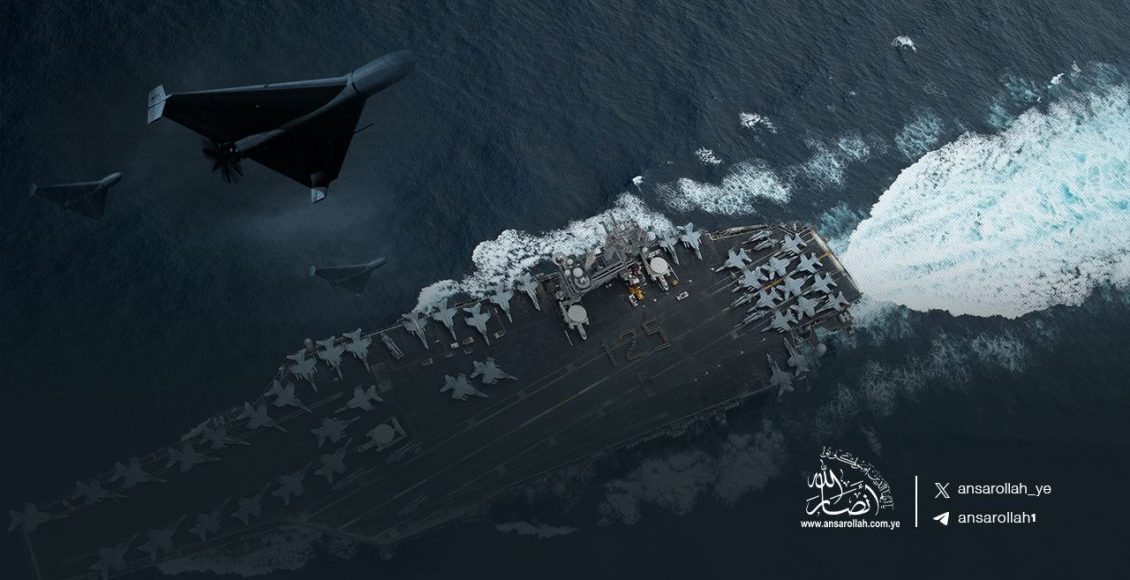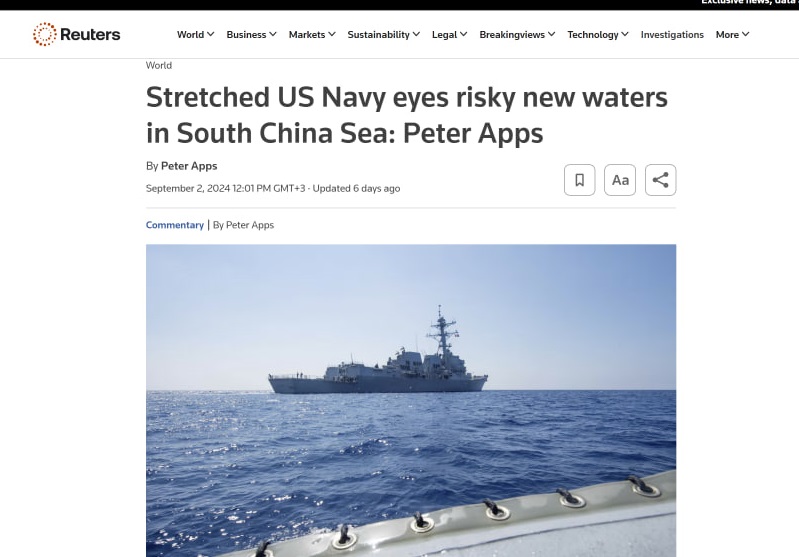In an unexpected turn of events reported by the Associated Press, "USS Theodore Roosevelt", the American aircraft carrier deployed to replace the USS Dwight D. Eisenhower, withdrew from the region shortly after its arrival in mid-July. The massive warship, formidable in the eyes of most, appears less so to the Yemenis, as it retreats from the area without engaging in any conflict.
From Eisenhower's Humiliation to Roosevelt's Retreat
The embarrassing withdrawal of the USS Eisenhower, which came under fire from Yemeni armed forces, is still fresh in the minds of many, particularly in Western circles. Now, the Roosevelt follows suit, pulling back before even entering the battlefield, and without a single skirmish with the Yemeni forces.
Although the Roosevelt was sent to fill the void left by the Eisenhower, it remained distant, steering clear of the heated waters it was meant to patrol. This avoidance is a stark contrast to its stated mission, as outlined by the Pentagon: to protect "Israel" and restore its maritime security. Instead, the maritime theater became even more intense than during Eisenhower’s deployment. Ships barred from navigating, continue to reroute, return, or face attacks. Yemeni forces, no longer content with simply deploying their weapons, now send personnel to further enforce restrictions and punish defiant vessels.
The Roosevelt likely witnessed the plumes of smoke rising from the “Sounion” ship incident but chose not to respond. Observers of the dramatic scene unfolding at sea say that the U.S. Navy appears paralyzed like never before, unable to act in the face of Yemeni power. Some have even described this as an "unprecedented fall" of American military might, brought to its knees by Yemeni forces.
Two Aircraft Carriers Together, Yet Powerless
For the first time, two American aircraft carriers—the Eisenhower and Roosevelt—operated in the same maritime theater simultaneously. However, according to Yemeni decision-makers, this will not be the last time American naval power finds itself impotent, unable to defend itself or others.
Officers from the Eisenhower have been vocal about the humiliation surrounding its retreat, citing it as one of the most disgraceful moments in U.S. naval history. The commanders of the Roosevelt now face the challenge of explaining their withdrawal, particularly as the carrier never even engaged with Yemeni forces. Having learned from Eisenhower's ordeal, they chose to remain at a safe distance, avoiding any risk.
American Prestige Tarnished
In mid-July, following Eisenhower’s retreat, the Pentagon deployed the Roosevelt to the region on a mission under the guise of "securing maritime navigation", a justification increasingly overused by the U.S., as well as to, bolster U.S. military presence in defense of Israel against potential threats from Iran and its proxies. A White House spokesperson at the time emphasized these objectives, while a Western magazine, The National Interest, published a story of "Houthis Panicking as Roosevelt Enters Their Waters,” praising the carrier's capabilities and its formidable strike group.

However, by August 6, a U.S. official told Reuters that, for the first time since 2001, in over two decades, no American aircraft carrier was stationed anywhere in Asia. This stark reality reflects the difficult choices facing the U.S., which has scaled back its presence in the Red Sea. During its campaign there, the U.S. Navy launched more Tomahawk land-attack missiles than the entire number purchased by the military in 2023.
According to Samuel Byers, a former Pentagon official and senior advisor at the Center for Maritime Strategy, "Simultaneous crises in different parts of the world, especially in the Middle East, are stretching U.S. forces thin." Reuters further reported that only a small number of European warships remain in the Red Sea, with complications arising from the attempted rescue of the “Sounion” due to the threat of further Yemeni attacks.
The Red Sea Without American Dominance
As more commercial ships avoid the Red Sea, Reuters emphasized that the idea of the U.S. Navy, once the world’s most dominant force, abandoning its campaign is something previously unimaginable. American officials are increasingly acknowledging that European countries must now take responsibility for their own backyard, while Washington shifts its focus to the Pacific.

In a similar vein, the Daily Telegraph published a report on August 24, confirming the defeat of the U.S. Navy by Yemeni forces, which forced the Americans, along with their British allies, to vacate the Red Sea. This departure marked the absence of any warship from the U.S.-led “Operation Prosperity Guardian” in the region.
The Telegraph detailed how the operation, launched in December 2023 in response to Yemeni naval attacks on ships connected to Israel, aimed to create a united international front. However, these efforts were in vain, as the Yemeni Navy continued its assaults unabated.
The report also highlighted the failed attempt by a European Union vessel to rescue the Greek ship “Sounion,” which was thwarted by Yemeni threats. The article noted that the EU, despite its limited naval resources, was the only force present, with no American-led coalition ships within 500 miles.
A Shift in Power
The American military, it seems, has not learned from its mistakes—or, perhaps, it is simply on an inevitable path to decline. As the USS Theodore Roosevelt exits the scene, it’s becoming clear that the era of U.S. dominance in the region may be coming to a close. As U.S. power recedes, one is left to ponder whether America is being led to its downfall by divine will, as echoed in the Quranic verse: *"Such is the seizure of your Lord when He seizes the unjust cities. Indeed, His seizure is painful and severe."* (11:102)









